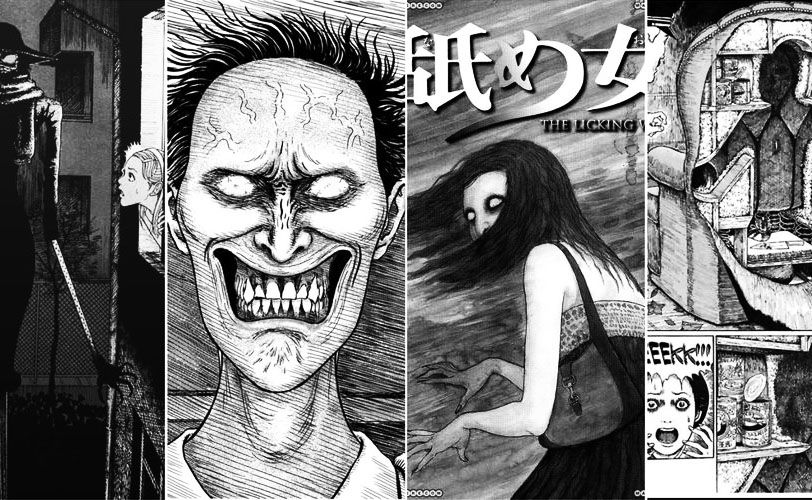Horror has its many ways of stirring up fear. In movies, it’s the frightening scenes that startle the audience, while in books, it’s the unfolding stories that creep terror into the mind. Japanese graphic novels, or more commonly known as manga, combine the best of both mediums. The genre has immersive worlds to explore, and none are more horrific than the ones created by the artist Junji Ito.
Junji Ito is a Japanese mangaka, a manga artist, who specializes in the horror genre. Ito’s distinct art style is often unsettling and unforgettable. The black and white colouring of manga complements Ito’s art as the black ink shadows and highlights every dark crevice on the body. And the body is where the darkest fears can be found.
Ito’s work focuses on body horror and the supernatural. He fills his panels with body parts shifting into something monstrous. The turn of a page holds so much power as you await what nightmares lie on the other side. His work feeds on human flaws and anxieties, eliciting fears from deep within our psyches.
“I wasn’t consciously aiming for body horror, but I believe the human mind is the scariest part of oneself,” Ito said in an interview with Viz Media. “When the body manifests those fears, the body becomes the scariest part, so I drew a lot of transformations.”
These hauntingly beautiful visuals aren’t the only things that make Ito the master of horror manga. Ito’s strangling stories stir dread from the unexpected. He takes seemingly ordinary body parts and everyday objects and twists them until they disturb and disgust you. Ito offers no explanations for these odd happenings, holding your attention on the horrific instead of reality. As a result, you’re left feeling hopeless and helpless, like Ito’s characters.
The mangaka was exposed to horror at a young age and has credited much of his influence to other creators like Kazuo Umezu, Hideshi Hino, and H. P. Lovecraft. Some of Ito’s most popular works include Tomie,Uzumaki, and Gyo. Tomie was Ito’s first series, published in 1987 in Gekkan Halloween, a monthly magazine. This series won an honourable mention for the Kazuo Umezu Prize, an award for best horror manga.
Ito also has short stories in other collections such as Slug Girl, Glyceride, Fashion Model, and Long Dream, among others. If you prefer to watch rather than read his work, many of Ito’s stories have been adapted into the anime Junji Ito Collection.
Ito has also published a personal manga about his wife, Ayako Ishiguro, and their two cats, called Junji Ito’s Cat Diary: Yon & Mu. This understated work landed a place on The New York Times’ weekly list of the 10 bestselling manga volumes. Meanwhile, in 2019, Ito’s manga adaptation of Mary Shelley’s Frankenstein won an Eisner Award for the best adaptation from another medium. These achievements, alongside the many translations of Ito’s work, testify to manga’s rising popularity outside of Japan.
Ito reign of terror seems never-ending, as he continues to captivate fans. Even though the project was eventually cancelled, Ito worked with director Guillermo del Toro and game designer Hideo Kojima on the horror game Silent Hill. However, you can still find Ito’s likeness as an engineer in Kojima’s game, Death Stranding. He even made his first North American appearance at the Toronto Comic Arts Festival (TCAF) in 2019.
In August, Ito released Venus in the Blind Spot, a collection of his best short stories. You can also find more of his twisted creations in Remina, a sci-fi manga, which will be available in December. But until then, there’s plenty of Ito’s previous manga to sink your teeth into. If horror is what you’re looking for, horror is what you’ll find in the worlds of Junji Ito, among twisting bodies and warped psyches.



